#filipino creative
Text
Hi Tumblr I'm an Asian fantasy author fleeing the sudden death of all my other social media sites 👋 I've used Tumblr for years as a fandom lurker and rarely posted but in light of all my other communities imploding I guess I'll have to figure out how to be actually active on Tumblr and find bookish and writerly folks here 💜 say hi if that's you 🥺
If you love diverse filipino fantasy with bipoc leads, angry bi women clawing for space in a world that's always rejected them and soft boys who'd do anything for them, awesome elemental magic based on early Filipino shaman/ babaylan/katalonan mythologies and the Tagalog creation story, and the Bakunawa/Laho the 🇵🇭 sea dragon 🐉 and drowning colonizers then I hope you'll keep an eye out for SAINTS OF STORM AND SORROW coming in June 2024 from Titan Books

#author#writer#writeblr#readblr#bookblr#filipino author#filipino creative#asian fantasy#lgbtqia#queer fantasy#my writing#saints of storm and sorrow#fantasy book
4K notes
·
View notes
Text
GAMESHOW HOST WALLY DOODLE DUMPS
How you think he rizz

How he actually rizz

Part 1
Part 2
Part 3
Part 4
Wow the parts are getting longer-


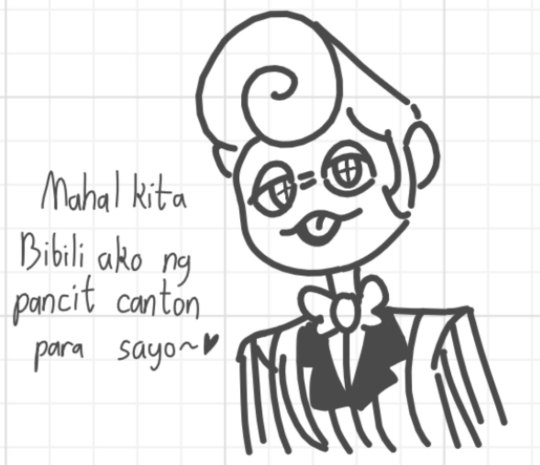




Introducing the Early Concept version and the RED FLAGS himself ✨️✨️✨️
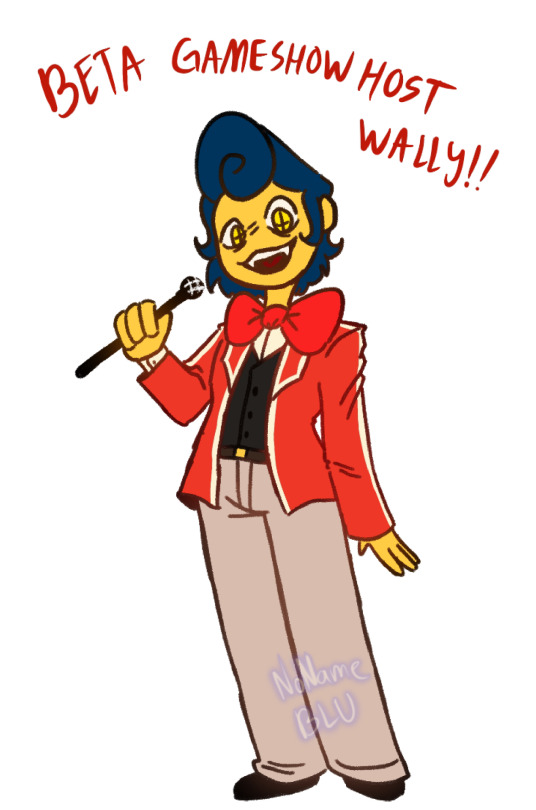
Imma ramble about his dumb ahh
So this Beta Gameshow is VERY DIFFERENT from who he is now, basically everything OG doesn't want to be.
When OG is against the killings of this deadly gameshow he's trapped in, Beta has no empathy, do not try to give him a redemption arc, he's heartless and will not care a single thing about you.
He kinda has a nice relationship to Home, still gets tortured tho
Plus he doesn't have any powers at all, he mostly rely on Home for everything while he looks at the camera and look pretty.
Beta's Gameshow was a bit like Danganronpa where contestants would go through certaind death challenges.
While OG now is just a chill trivia Gameshow about your life and the deepest darkest secrets and fears you have hidden that'll be exposed to your loved ones and maybe even enemis :D
#The reason why the beta idea changed it's only because I didn't think the idea is creative enough for me#Filipino Gameshow Wally Real??? 👀👀👀#welcome home#welcome home fanart#welcome home arg#welcome home fandom#wally darling#welcome home au#welcome home puppet show#welcome home wally#wally darling fanart#welcome home wally darling#welcome home art#wally darling welcome home#welcome home artist#welcome home alternate universe#wally welcome home#wh wally#wally drawing#wally fanart#wally darling art#wally darling au#gameshow host Wally#game show host wally
85 notes
·
View notes
Text
GOMBURZA (2023) - MMFF REVIEW

“Vivan Los Filipinos. Mabuhay ang mga Filipino.”
This film is the story of the three martyr priests. Three Filipinos who were part of the native community who were once under Spanish colonial rule and oppression. If you have been updated, or have been listening in your elementary Philippine history classes, it’s GOMBURZA, not MAJOHA.
Despite it being produced by Jesuit Communications, the film was able to execute (No pun intended) a factual depiction on a turning point of Philippine history without overused emphasis of religion. It was able to capture how the Catholic faith was used as an instrument of oppression during the Spanish colonial period (This was especially ironic considering how return of the religious orders, including the Jesuits, were the reason for the silencing of the secularization movement). What also impressed me is that almost every single detail in the movie, even in the dialogue, came from actual events in history. It is evident that enough research was made to make this film as accurate as possible.
The film’s cinematography was able to capture life during the period whether it was amongst the Filipino liberals, the Spanish priests, the Governor-Generals, or even the three main characters in our story. With every other scenes of the film shifting from light to dark atmospheres, this symbolized the reality of Spanish colonization — warmth, acceptance, and friendship amongst fellow Filipinos; and ruthlessness, inhumanity, and oppression from the Spaniards (and even traitors). Adding emphasis to GomBurZa’s (2023) cinematography is its sound design. Just by feeling the cinema floor rumbling and the deeply-voiced voiceover in the film’s ending segment, this film can come to a point where it deserves its own IMAX screening.
Dante Rivero and Cedrick Juan showcase over-the-top stellar performances as Padre Mariano Gomez (played by Rivero) and Padre Jose Burgos (played by Juan). Both actors have embodied their roles, not only due to the fact that they, especially Juan, share a slight resemblance with the real life Mariano Gomez and Jose Burgos. It is also because that they were able to portray their emotions from having a friendly conversation, to later condemning their unfair arrest, trial, and death.
Pepe Diokno's time and effort in conducting research and including every important detail in the production is evident in the whole film itself, as it was not only ACTUALLY based on true events, but was able to evoke emotion and outrage, just like how the Filipinos of the 1870s did at the time.
With all of this said, GomBurZa (2023) is not only a history lesson, but also an immersion into the Spanish colonial rule and the lives of the three priests. Being a history nerd and a cinephile who has since learned the names of the three martyr priests as a little girl in elementary, I can definitely say that this was one of the only film experiences where I had witnessed the breaking of the fourth wall. The whole time I was in the cinema, it felt like I was part of their conversation, like I was a witness to their lives and execution.
What also added to this experience was that I watched the film on Rizal Day, and what better way to commemorate our national hero's contribution to Philippine independence than to learn about where it all started? Like what I always preached to my family:
Without GomBurZa, there will be no Jose Rizal. Without Jose Rizal, there would be no Andres Bonifacio. Without all of them, the Philippines and the Filipino would not exist.
GomBurZa (2023) is a cathartic experience that is definitely for the family. This film is a testament to the importance of appreciating and learning our history. Hopefully it serves as a reminder of our collective past, national identity, and the importance of our freedom.
[Metro Manila Film Festival 2023]
(my film review of "GomBurZa" is also available on letterboxd!)
#movies#writeblr#writing#creative nonfiction#creative writing#nonfiction#ph history#philippine history#period drama#historical drama#film review#film#films#movie#filipino cinema#mmff#mmff2023#mmff 2023#Cedrick juan#enchong dee#Dante rivero#philippines#movie review#gomburza#mariano gomez#Jose burgos#jacinto zamora
34 notes
·
View notes
Text

— it's a weird feeling being an english grad and a person of colour
#this one's for all my “whitewashed” girlies i love u <3#writing#creative writing#on writing#language#tagalog#filipino#poetry#bilingual poem#bilingual poetry#filcan#filcan writing#my writing#writings#writer#writers on tumblr#writers and poets#female writers#writers of colour#prose poetry#poets#poems and poetry#poets on tumblr
21 notes
·
View notes
Text


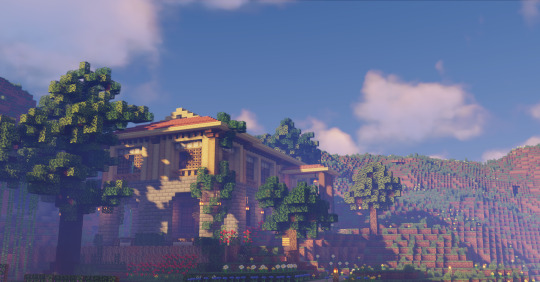
bahay na bato in the middle of nowhere
#i just wanna live in the middle of nowhere#in a pretty house if possible#minecraft#mineblr#sildurs shaders#minecraft house#aesthetic minecraft#minecraft build#mossystonewall#cottagecore#vanilla minecraft#cottagecore minecraft#creative world#bahay na bato#filipino#philippines#historical#historical aesthetic
418 notes
·
View notes
Text



[hey, fiction/prose writers! this one includes fiction/prose prompts. i'd love to see you there!]
through writing, we will examine the changed landscapes around us: burning asphalt sprawling through old prairies; oil-slicked oceans carrying omens of our futures; the evolution of blooming & breeding out of season; lack of tangible seasons… sign up here for £1!
#poetry#writeblr#writing prompts#poetry community#poets on tumblr#creative writing#prose prompts#poetry prompts#art prompts#climate change#climate justice#climate action#climate activism#southeast asian#jamaican#filipino#philippines#filipino tumblr
44 notes
·
View notes
Text
Expectations: In Which Diverse Stories Have Extra Criteria
CW: mentions of racism, brutality, colonization, more of a vent post than anything informative
As much as I don’t like it, I feel as though the best way to start this off is to provide context on my own background. I’ll get to why I don’t like it in a moment, so bear with me. I’m a first generation born Filipino American. My parents are from Tarlac (and a DNA test shows that we also have lineage traced back to Northern and Western Philippines as well some Central & Eastern and Southern China), and they raised us in a semi-traditional Filipino fashion. They didn’t teach us the language in fear of us being made fun of by other Americans, but we did grow up eating the food, respecting our elders, and practicing Filipino Catholic traditions that my parents grew up with in their homeland.
Needless to say, the remarks that followed me into my adult life have pulled my resonance with my heritage in every which way. To other Filipinos and other Asians, I looked part white, and they would ask for pictures of my parents for “proof” that I wasn’t. True story: I remember one of my college friends grabbing my phone and showing her friends in an “I told you so” manner, as if my race was some mystery for them to crack. It wasn’t. I fully told them from the start that I’m Filipino. My Titas would tell me that I looked “mestiza,” and how many young girls in the Philippines would want to look the way I do, and I didn’t know how to explain to them that I started hating how pale I am because of how other Asians would assume my race because of it.
At the same time, my non-Asian counterparts (yes, majority of the people who made these comments were white) would assume that I was some hodge-podge of all Asian cultures. I remember my high school teacher showing us a Vietnamese medicine commercial (this was a class on medical malpractice, and, if I remember correctly, she wanted to show us how medicine is advertised internationally), and she walked into class saying, “The only one who might understand this clip is Rory.” She’d used my deadname at the time, but you get the idea. Jaw-dropped, I had to say, “I don’t speak Vietnamese. I’m not Vietnamese.”
I know, what does this have to do with writing? We’ll get there; don’t worry.
Around 2018, the term “decolonization” entered my realm of awareness. I would see other children of immigrants from all over the world dive into their heritage and continue their ancestors’ practices. Thinking that this would be a genuine way to connect with my roots (I had, and still have, a complicated relationship with the Catholic Church, so I was excited to hear about other Filipino faiths), I began doing my research. At the time, I had a sizable following on TikTok, and I would post entertainment-only sort of videos regarding my spirituality and craft, and I even had to put out a video explaining why I didn’t go into more detail with the Filipino aspects of it. I wasn’t as learned with it as I am now, and I was afraid of the criticism and backlash others would have towards it. In hindsight, I really shouldn’t have given a sh*t, but the internet, as we all know, is cruel.
See, I use my writing as a way to connect with myself and other people, mainly. Yes, I have a story to tell, but a majority of my purpose is to discover and process my own emotions and findings. I use what I observed in society and how I grew up as well as what I learned from my own research. I won’t go into detail of the racism Asian Americans face nor the brutality we have endured over the years; frankly, if you are not already aware of it, Google is free.
Still, my work seemed to be followed by one main criticism: this isn’t yours to tell.
There were a myriad of reasons behind it. I wasn’t born in the Philippines, I’m white-passing, I wasn’t raised with anitismo, other marginalized groups have it “exponentially” worse, etc. I’d be lying if I said this didn’t affect my writing. I froze. I grappled with what I was “allowed” to tell based on all of these criteria. I’d pull up article after article of what I learned in hopes to justify the reasons for including certain aspects in my work; but because of my own upbringing, it never seemed to be enough. What’s worse, a portion of these criticisms completely dismissed the aspects of racism that Asian Americans have spoken up about time and time again (once again, because other’s have it worse or because there just wasn’t enough awareness about it for it to be “valid.”)
Imagine that. We read of thousands of iterations of medieval fantasies from white authors, thousands of European fae romances, thousands of Greek mythological retellings, and treat it as the default. There is no question of whether the author is Greek or Gaelic enough or if their ancestors played a huge role during the medieval era. Hell, my first published work was based on Greek and Celtic mythology, and no one talked about my race then, whether it was about how white I look or how I'm not white at all.
But gods help us if a minority doesn’t fit the ultimate minority model while telling their stories. To be honest, this was why I started disliking the need to talk about my background; it has begun to feel as though it is more to provide credentials rather than to satiate genuine curiosity from other people.
Yes, I do recognize that I wasn’t born in the Philippines and that I was raised Catholic, but I’ve come to terms with how I feel like that is okay.
First of all, if we want to hear from more diverse writers, we cannot keep projecting this “model minority” expectation towards them. Otherwise, it will discourage other diaspora writers, such as myself, from connecting and relaying their heritage in fear of not being “[insert marginalized group here] enough,” whatever that even means at this point.
Secondly, our history is full of movement, whether it was by our own will, such as my parents’ decision to come to America, or if it was forced upon us by our oppressors. As such, those raised outside of their homeland only further enriches our culture, not dilutes it.
To filter the perspectives of or to project your own biases towards diaspora writers is to promote the narratives of the colonizers. We are valid, and our stories should be, too.
#writingcommunity#writing#writers of tumblr#writers on tumblr#writers#writeblr#writers and poets#writerscommunity#writing life#poc author#diverse reads#diverse books#filipino#filipina#poc writer#creative writing#writer#writerslife#writer stuff#novel writing#on writing#writing community#authorlife#authors of tumblr#author#author life#author blog#author speaks#diverse authors#authors of color
14 notes
·
View notes
Text
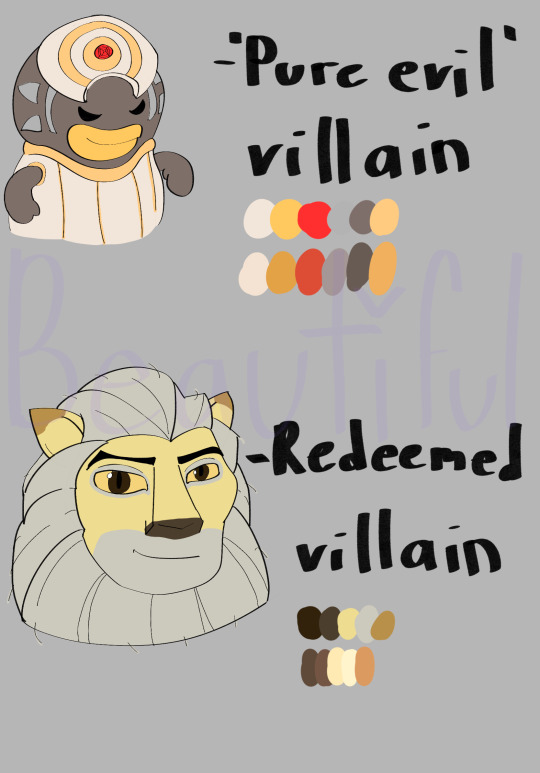
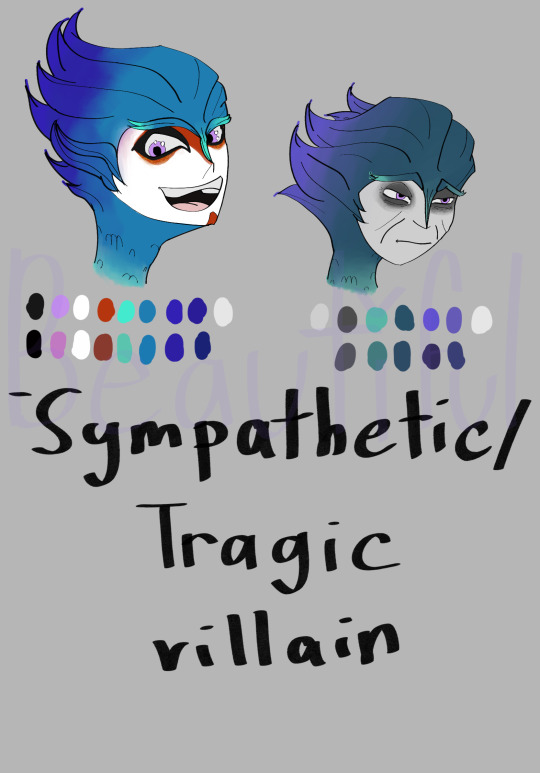
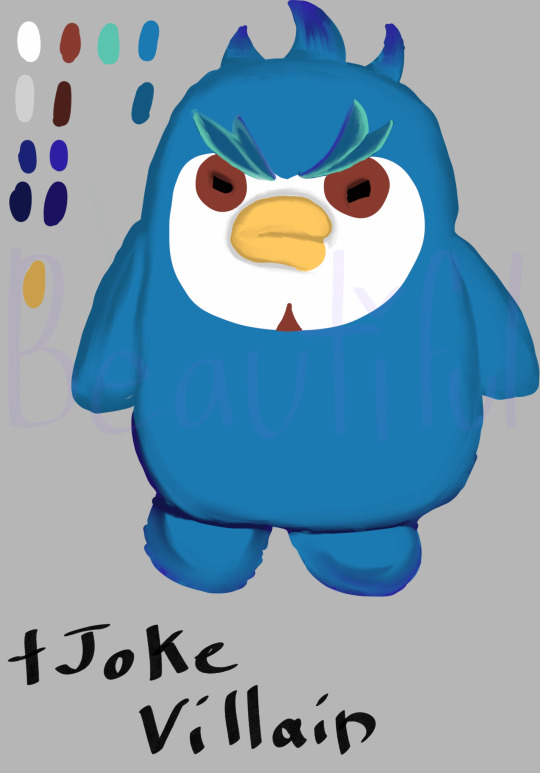
Decided to post on my analysis on these characters, so here it is:
I noticed that the 3 main antagonists in Running Man Animation fit into a specific villain category. If we remove Ulcus to focus on these three, we can see how they fulfill their roles. Pardon any misinformation, since I rely on the wiki and any bits of information I can get. I also had not watched the official English dubs.
Akong, the main villain of Season 2 Part 1, would be the “Pure evil” villain. He was a royal priest in Old City but after practicing forbidden magic he became power-hungry and strived to conquer worlds. He became so powerful that he needed to be defeated by the likes of people like Charming Gold, Manus, and The Guardians. (There was an unnamed Pullulu ancestor but that’s not important.) The moment he was released from his (around) 1,000-year-old prison, he immediately took control of Old City and placed it under tyranny.
He has little to no sympathetic qualities or backstories, so the audience can not humanize him to a great degree.
Manus, the main villain of Season 2 Part 2, would be the only “Redeemed” villain. He is the King of the lavish Leo Tribe, who ruled over all the other tribes but was overthrown for his tyranny.
He strived for revenge and power and was shown to be a formidable foe to the Running Men, to the point they almost sacrificed themselves to save the world. At the end of the season, he decided to change for the better, having a new outlook on life when he realizes he was unworthy of yielding the Ultimate power. He now strives to rebuild his tribe, as they were sealed away for around 1,000 years erased from history.
He’s slightly better than Akong, because while Manus almost destroyed the world, he had a change of heart. Unlike Akong, who stayed power-hungry until his death.
Charming Gold, the memorable villain of Season 1, would be the “Sympathetic/Tragic” villain. I had trouble categorizing him, as he has traits of both a sympathetic and tragic villain, but ultimately decided to categorize him as both. Unlike Manus and Akong, we were shown a detailed and personal backstory that was very pitiable. Born as the only son of the queen and king of the Pikok tribe; a tribe known for their beauty, which he rather lacks. When Charming Gold was young he was constantly ostracized for his looks, something he had no control over.
When he had enough of it, for some unknown reason, he had an energy absorption ability that was never elaborated and ended up turning a bully of his into a mummified husk while Charming Gold now had newfound beauty. All eyes were on him, but the bullying stopped. He continued to do this, turning his victims into dust. He is the only living member of the Pikok tribe because it is heavily implied he killed the majority of them. (Side note: That’s a plot hole I’ve been bothered by since Season 1. How come nobody notices that a whole tribe is gone except for this one suspicious guy is something the writers probably didn’t think through.) Charming Gold still appears in the majority of Season 2 because Akong resurrected him. (He probably resurrected him by using forbidden magic, but how did Akong found the body?)
Even then, he was a still formidable foe in Part 1 while hiding under the identity of the Iron Beast, and even when he was exposed, Charming Gold was still strong. He had a brief truce with the Running Men to defeat Akong, but it was actually a ruse to gain something from Akong which was power, beauty, and immortality…then it heavily backfired on him.
In Part 2, he was a Pullulu and would be categorized as a “Joke” villain. I speculate that it is because he was absorbed by Akong, and possibly by the purification method that was cast on Akong. While Running Man Animation has some comedic moments with its characters, Pullulu Charming Gold was treated as almost a joke. He serves no real threat, other than being annoying. The majority of Running Men didn’t even recognized him, other than Pala and some others. It is likely that he would appear in the Revengers movie as he consistently made appearances throughout the show, but that is speculation. (Update: As far as I know, he did not.)
I don’t really have much to say about Akong and Manus since I don’t know much about them, but I have a lot to say about Charming Gold since he was the original villain and my favorite out of the three. I wanted Charming Gold to have a redemption arc so I got pretty bummed out that Manus was the redeemed villain, but it's good. Charming Gold refused to change, even if he was given multiple chances to take, unlike Manus. I just find it interesting that the same sad backstory that he has that could work for a redemption arc is the same reason why he is stubborn in his ways and continues to try to achieve his selfish goals. I think that in the last episodes, before he turned back into a Pullulu again he was supposed to say that he would achieve power, immortality, and beauty again but got cut off. I just find that funny.
That’s all I have to say for now. For the art itself, I practiced drawing in fluid motions. I also tried to train myself to accurately see and use the colors as I don’t like using the eyedropper tool on references; so the colors are a little bit off. Except for Manus, I dropped the ball on his mane. He looks like an old man. But the digital painting was where I definitely messed up. It was harder than I expected it to be.
Also, while Charming Gold was fun he was so pathetically hard to draw I don’t think this character design is made for digital 2D animation. Don’t quote me on that.
Thank you for reading again! If you want to see more of my art, you could check my Instagram account: beautiful_02.08.18
Reference:
Running Man Animation was created by LINE Friends Corporation and SBS
#God#Christian#Christian art#Christian artist#Christian creative#Christian faith#fanart#running man animation#running man animation fanart#art#art practice#my art#Color theory#Running Man: Revengers#running man revengers#Villains#analysis#Korean animation#Filipino#Filipino artists#Filipino artist#Villain#Colors#line friends#Korean#Korea#Artist
23 notes
·
View notes
Text
Ephoszumina and Avery short story request for @lovelielaurel
#writerscorner#creative writing#writing#request#writing requests#short story#oc story#original character#i used a bit of Filipino and Irish slang
4 notes
·
View notes
Text
becoming an Atenean
[Poetry]
I’ll abandon the Thoroughfare
where I was raised
for the Lavender Haze
the source of the angels’
undeserved, unending praises
for their God.
The bygone brown
for blue to
celebrate
and black
to grieve the old
self.
The grotesque,
scandalous prose
I once wrote for those
who listened
condemned for the needs
of those above
I’ll ditch my doctrines
for an essay or two
and fight alongside
the white men
who stole space from
a friend who needed it.
I’ll dye my hair
grey
and miss the ironies
I and those around me
have created for
ourselves.
I’ll miss myself
knowing I’ll grow as a person
for good, according to their standards,
that in a few years my Mother would
look at me in the eyes and say,
where are you?
***
From whoever I’ll become,
Ad Majorem Dei Gloriam!
#writers on tumblr#writing#fiction#poetry#creative writing#filipino writers#original fiction#poets on tumblr#original writing#writers#ateneo de manila university#ateneodemanilauniversity#ateneo#admu#onebigfight#obf
8 notes
·
View notes
Text
Pahimakas
Ako ay isang yugto ng iyong kwento.
Nagiisang kabanata na silakbo.
At baka sa susunod na habang-buhay.
Ako'y iyong tinadhana't pinagtagpo.
Pero kahit na ako'y isang gunita,
Ikaw ay naging titolo ng kwento ko.
Ika'y naging titolo ng tula't awit.
At lahat ito'y iaalay ko sayo.
Mapanuya lahat ng aking gagawin.
Gagawin ko lahat, isang utos lamang.
Kaya hindi ako handa sa pahimakas.
Bigla, bigla. At sa huli, iniwan lang.
Mananatili ba akong tagapinta?
Para sayo; lahat ng piesa'y inialay.
Ano ang gagawin ko pag wala ikaw?
Sino ba ako pag wala ang dalisay?
Ika'y naging buong mundo't pagkatao.
Gagawin ko lahat para sa'yong ngiti.
Ano ang artista'ng walang paraluman?
Isang pagsamo para ika'y manatili.
Nagmakaawa ako't nagsusumamo,
"wag mo'kong iwanan, pakiusap lamang!"
Ngunit, sa huli, ika'y naging gunita.
Mapait na lampas, saan ba nagkulang?
Lahat ginawa para ika'y sumaya.
Saan ba nangaling iyong pahimakas?
Paano ba harapin ang nakaraan?
para maharap ang mapait na bukas?
#poetry#poets on tumblr#writers and poets#poetic#poems#original poem#poems on tumblr#poems and poetry#tagalog#filipino#love#hearbreak#writers on tumblr#heartbreak#to be loved by a writer#writerscommunity#female writers#creative writing#writeblr#writer stuff#philippines#love poem#poem#words words words
4 notes
·
View notes
Text
#8
WHO ARE YOU
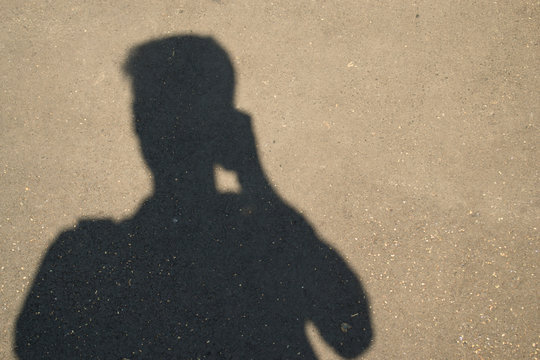
Who are you to make my heart rate rise
Who are you to make my day as sun rise
Who are you to be so kind and handsome
Who are you to make my life wholesome
Who are you to make me so foolish of you
Who are you?
Or should I ask, who am I? to fall for you.
Photo not mine CTTRO
#filipino#tagalog#tagalog post#creative writing#writer#makata#manunula#maikling tula#poetry#tagalog quotes#poem for him#love poem#love#love positivity#love poetry#confession
13 notes
·
View notes
Text

had the sudden inclination to the word "free" lmao
2 notes
·
View notes
Text
my frail heart loves no one
for i have a lifeless body
that forms a deep arch on my bed
—a dead weight trying to cling
to the bedroom floor, perhaps
aching to be buried alive.
but i am only a puppet,
with limbs dangling helplessly
as red strings try to keep them in place;
for it is fate that saturates my need
to succumb in my own world as i please.
there, i learned how to break my own vows
and break my own limbs as if they were clay.
as i play pretend to be a master at pottery,
i take all the brokenness
and mould the all smithereens back in one piece.
even if i know i already failed
many times to keep myself together.
#poetry#poems#dead poets society#writing#creative writing#writings#poets on tumblr#filipinopoet#filipinowriter#filipino blogger#poets corner#poetsandwriters#dark poem
4 notes
·
View notes
Text
Blog#01 | The Spiritual Essence of a Goat: Embracing Resilience and Balance

This humble goat holds deep spiritual significance, transcending its physical form. With symbolic qualities, it guides our spiritual journey, teaching lessons of resilience, independence, fertility, and balance. The goat teaches us valuable lessons about life and the pursuit of higher consciousness.
Resilience and Adaptability:
A humble goat who exemplify resilience and adaptability, thriving in diverse and challenging environments. They inspire us to rise above obstacles, reminding us of our inner strength and ability to navigate life's challenges.
Independence and Freedom:
Humble goats have long been recognized as symbols of independence and freedom. They possess a sense of self-reliance and fearlessness, often venturing into uncharted territories with confidence. Their independent spirit encourages us to embrace our own uniqueness and express our individuality without hesitation. The goat teaches us to trust our instincts and break free from societal expectations, reminding us that true liberation lies in embracing our authentic selves.
Fertility and Abundance:
Throughout history, goats have been associated with fertility and abundance. Their ability to reproduce and provide nourishment through milk and meat has positioned them as symbols of prosperity and abundance in various cultures. As spiritual beings, goats invite us to cultivate abundance in all aspects of our lives, whether it be in relationships, creativity, or material wealth. They remind us to tap into the infinite well of abundance within us and celebrate the richness of our existence.
Balance and Stability
This Humble goat's innate balance and sure-footedness on rough terrains provide a valuable lesson in maintaining equilibrium and harmony in our lives. They symbolize the delicate dance of balance between the physical and spiritual realms. The goat's presence reminds us of the importance of grounding ourselves amidst the chaos and finding stability within. By embracing both our light and shadow aspects, we can achieve a harmonious integration of the dualities that exist within us.
Curiosity and Playfulness:
The playful nature and inquisitive spirit of goats offer us an invitation to embrace curiosity and approach life with a sense of wonder. They remind us to foster a childlike enthusiasm and engage in spontaneous exploration. Through playfulness, we reconnect with the joy and zest for life that resides within us, opening the doors to new possibilities and deeper spiritual insights.
Sacrifice and Devotion:
In certain spiritual and religious traditions, goats have been chosen for sacrificial rituals, symbolizing purity and devotion. This sacrifice signifies the surrender of the ego and the offering of one's essence to a higher purpose. The goat teaches us the transformative power of selflessness and the significance of aligning our actions with our spiritual values.
#writerslife#writers on tumblr#writerscorner#original writing#writerscommunity#creative writing#literature#writeblr#self development#filipino tumblr community#reading#self healing#self improvement#spirituality#mindfulness#meditation#conciousliving#positivity#self care#inner peace#self discovery#law of attraction#mindset#gratitude#mindseye#wellness#mental health#empowerment#affirmations#healing
2 notes
·
View notes
Text
regardless of whether the marketing for hll says it's actually really anti marcos guys we promise (which i have a hard time believing anyway but ok) literally nobody needed or wanted a white guy writing a musical about (and profiting from) filipino history
#like listen i have no skin in the game here i am not filipino#even if the musical somehow turns out to have the most woke book in the world (highly doubtful but ok.)#people seem to be overlooking the fact that Filipino People Can And Do Write Musicals Too#broadway equivalent of The Mouse presenting itself as soo culturally sensitive by releasing film after film#set in noneuropean locations and featuring noneuropean characters and voice casts#while still hiring white people in literally every major creative and managerial role behind the scenes#like come on.#sasha speaks
3 notes
·
View notes